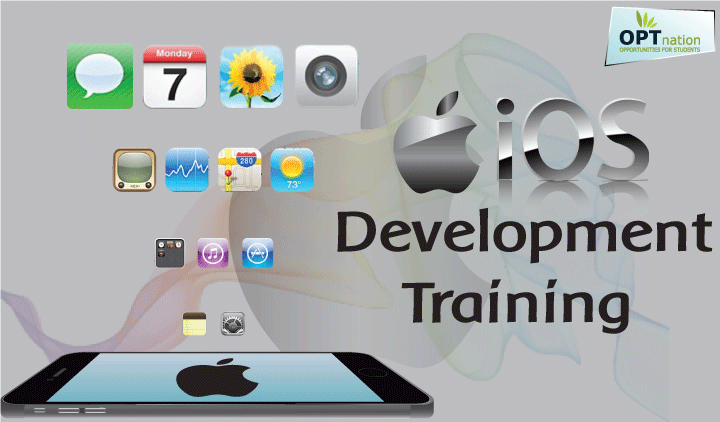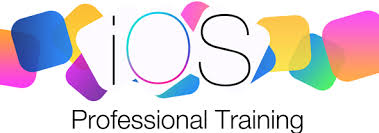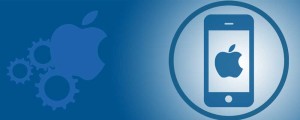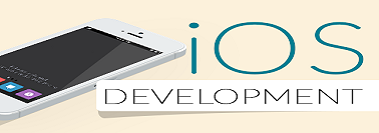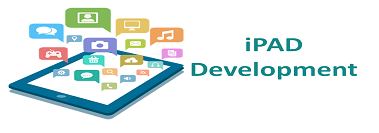❯ iOS Development Training – A Brief Idea
An iOS is a mobile phone operating system created and developed by Apple Incorporation. It is distributed exclusively for Apple hardware. It has a state-of-the-art environment that enables developers to create and produce powerful applications proactively. iPhone has several built-in applications, has quality peripherals, and provides direct manipulation in the user interface (UI) for multi-touch gestures. The iOS kernel is XNU. Apps are developed using a software development kit (SDK) with Xcode extension toolset – compilers and framework.
The iOS Development Training using Swift will introduce with the exciting world of iOS application development. Swift is a brand new programming language for iOS and OS X applications, both of which adopt safe programming patterns and adds modern features to make programming easier, more flexible, and more fun. This course will enable us to design and develop applications for iPhones and iPads. Apart from the tools and language, you will explore design patterns, coding conventions and guidelines, and essential concepts like model-view-controller, storyboards, and delegation. Also, learn what is possible within the new iOS 7 interface, and obtain a checklist for successfully submitting your app to the App Store. Here’s an iOS Dev Hiring Guide for the employers looking for i0S Developers.
❯ iOS Application Development – Challenges
The various challenges while learning iOS Development are mentioned as follows:
-
- The working of the approval process is a mystery in some cases.
- The App Store review guidelines are a big challenge as policies are left to Apple’s discretion of what they feel is right.
- Getting used to Xcode updates is quite buggy, as they crash a lot.
- At times, the iOS SDK documentation can be minimal or misleading – with new features, Apple releases a new SDK.
- The web services use older technologies like RSS instead of using more modern protocols.
- It is difficult to stay tuned with frequent updates of the new features.
- Optimizing for performance is also a big challenge as it eats up an ample amount of time.
❯ Course Objectives
After the completion of iOS Application Development using Swift course at OPTnation, you will be able to:
-
- Start quick coding in Objective-C
- Hands-on proficiency with Objective-C
- Taking advantage of numerous powerful features of the Objective-C language and the libraries and frameworks of the iOS SDK’s
- Understand and create Objective-C classes, methods, and objects
- Understand the fundamentals of ANSI C programming
- Become familiar with the basic concepts of OOP
- Become familiar with APIs and foundation framework classes
- Obtain a solid understanding of C functions and data structures
- Learn dynamic binding and the Objective-C runtime
- Get speed fast on Xcode and interface builder
- Write custom iPhone or iPad drawing and animation code
❯ Who should do this course?
Following people can undertake this training:
-
- Individuals aspiring to sky-rocket their careers in mobile phones
- C programmer
- Project managers and mobile apps developers
- Testing professionals
- Graduates eager to learn Objective-C to develop code for the iPhone or Mac OS X desktop apps
- Experience professionals in ANSI C programming
- Anyone with programming experience interested to learn the iPhone SDK to create applications for iPad and iPhone
- Architects and software developers
- Mainframe professionals
❯ Pre-requisites
-
- Prior exposure to C language
- OOPs knowledge
- Experience in programming abstractions level and programming paradigms
>> Register for iOS Development Training <<
❯ Course Content
Module 1: Outline of the iOS Development
-
-
- Platform options overview
- Device platforms
- Fragmentation customers
- iOS technologies
- Cocoa touch
- Media
- iPad/iPhone application development
- Core services
- Core OS
-
Module 2: Understanding Swift
-
-
- Introduction to Swift
- Introduction to Xcode IDE
- Structure of the Swift program
- Swift playground
- Basic syntax
- Data types
- Variables
- Classes
- Structs
- Compiling a Hello world
- Building a Hello world
-
Module 3: Getting Started with Swift
-
-
- Working with collections
- Extensions
- Protocols
- Tuple
- Generics
- Subscripts
- Functions
- Closures
- Automatic reference counting
-
Module 4: Objective-C Refresher
-
-
- Basics of Objective-C
- Structure
- Objects
- Classes
- Subclasses
- Delegate classes
- Accessor methods
- Primitive variables
- Pointers
- Methods and messages
- Creating objects
- Using existing classes
- Create custom classes
- Addition of properties
- Other sources
- Resources
- Table-view-based apps
- Connecting to the network
- Synchronous reachability
- Asynchronous reachability
- Embedding images in the application builder
-
Module 5: Delegate Design Pattern in iOS
-
-
- iOS UI text field
- Understanding protocols
- Implementation of delegate methods
-
Module 6: iOS Development Basics
-
-
- Installation of Xcode
- Installation of iOS SDK
- Understanding Xcode
- Project templates
- iOS app creation
- Instruments
- Pillars of iOS development
-
- Tools
- Xcode
-
- Swift language
- Design patterns
- Framework
- Correct UI
- AppleHIG
- Testing
- Signing
- Provisioning
- MVC pattern in iOS app development
-
Module 7: Environment of iOS Development
-
-
- The process of development
- Working with iOS simulator
- Debugging
- Application data management
- File and data management
- Event handling
- Application architecture
- Drawing and graphics
- Audio and video in iPhone
-
Module 8: Designing and Building an iOS App
-
-
- Architectures of mobile apps
- High-value mobile apps from start to finish
- Synchronization
- Connection types
- Client-server
- Client-server data transfer
- Mobile client UI
- Mobile client apps
-
Module 9: Controllers and Layouts
-
-
- The life cycle of the iOS app
- iOS view controllers
- UI creation
- Layout introduction
- Views introduction
- Designing responsive interfaces with Auto layout
- Controllers walkthrough
- iOS app debugging
-
>> Register for iOS Development Training <<
Module 10: Memory Management in iOS Development
-
-
- iOS object ownership
- Retaining iOS count management
- Auto release protocols in iOS
-
Module 11: Using Storyboards
-
-
- Exploring storyboards
- Creating new scenes and segues
- Passing data between sense
- Creating custom classes
- Making the connection
- Loading the data
- Passing objects between scenes
-
Module 12: Table View, Collection View, and various View Controllers
-
-
- What is the table view?
- Basic table view creation
- Creating data source
- Loading data into table view
- Reusing table views as cells
- Table views customization
- UI collection view
- What are the multiple-view apps?
- Using the navigation controller
- What is the master-detail app
- Create tab-bar-driven app
- UI page view controller
-
Module 13: Location, Animation, Map and Social Sharing
-
-
- What are animations?
- Core animation
- UI kit dynamics
- Working with maps
- MK map item
- MK placemark
- MK map view
- Facebook pop animation
- Social sharing via UIActivityViewController
-
Module 14: Map and Location APIs
-
-
- Getting started with MapKit
- MapKit: overlay views
- Geofencing
- Routing with MapKit and core location
-
Module 15: Other Core APIs
-
-
- Making a calendar reminder
- UIGestureRecogniser
- iOS 8 metal introduction
- Getting started with handoff
- Getting started with NSRegularExpression
- Getting started with Apple Pay
- Background modes
- Adding texture to iOS 8 metal
- Address book in Swift and iOS
-
Module 16: JSON Handling, Network Operation and Image Caching
-
-
- Networking with Alamofire
- Networking with SwiftyJSON
- Networking with HanekeSwift
- Networking in the iOS app
- Adding frameworks using Carthage
- Managing frameworks using Carthage
- JSON handling using SwiftJSON
- Performing networking using Alamofire
- Download images using HanekeSwift
- Cache images using HanekeSwift
-
Module 17: Data Persistence and Storage
-
-
- Introduction to iOS data persistence
- Introduction to core data
- Working with core data
- Models creation with entities
- Saving models
- Fetching models
- Editing models
- Removing models
- Sample application implementing core data
-
Module 18: iOS Web Services
-
-
- Web services basics
- XML parsing
- Integration with UI
- Fetching data from URL in iOS
- Simple iOS RSS Reader application
-
Module 19: Universal App, Size Classes and Camera
-
-
- UISplitViewController
- Master-detail application
- Using the camera and gallery to capture images
- Using size classes for adaptive layout
-
Module 20: iOS Reference Library
-
-
- The core applications
- Files and networking
- Device support
- Text and web
- Device support
- Windows and views
- Application preferences
- Tools and pillars of iPhone app development
-
Module 21: Tools and Libraries
-
-
- Improving app’s performance with Pulse.io
- Facebook tweaks
- Facebook shimmer
- Tesseract OCR
- Google Maps iOS SDK
- CocoaPod
- Using CocoaPods with Swift
- Creating CocoaPod in Swift
- OAuth 2.0 with Swift
- Building apps with JavaScript
-
Module 22: Multitasking
-
-
- Background audio
- Background location push notifications
- Local notifications
- Voice over IP
- Task finishing
- Fast application switching
-
Module 23: Threading
-
-
- iOS basic threading programming
- Creating a custom thread to fetch data
-
Module 24: CloudKit, Parse and Submitting Apps to App Store
-
-
- Introduction to CloudKit
- Implementing CloudKit storage
- Localizing application
- Interacting with parse backend
- App submission to Apple App Store
-
Module 25: iOS Application Store Basics
-
-
- Overview of provisional certificates
- Overview of developer certificates
- Preparing iOS application store building
-
Module 26: iPad Basics
-
-
- iPad applications basics
- UI popover controller
- UI split view controller
-
Module 27: iPad Development
-
-
- Understanding the differences in iPad development
- Using the split-view controller
- Exploring popovers
- Addition of modal view controllers
- iPad-specific UI elements
-
Module 28: Finishing Touches
-
-
- Addition of launch images
- Addition of iOS app icons
-
Module 29: Testing and Certification
-
-
- Life cycle of usability testing
- Life cycle of integration testing
- Life cycle of system testing
- Device certifications
- Services assurance
- QoS assurance
- Performance
- Security
-
FAQs
What should I know about iOS before attending the class?
You should enroll for the class by simply registering with OPT NATION and familiar with OOPs and C language.
After I complete the course, what if I have queries?
Relax. Do not panic. You are a lifetime member of the OPT NATION once you have enrolled. You can attend the classes, access the content, or talk to our experts anytime you have a doubt. You just need to submit your query to the support team; our faculty will revert and help you out in any way you want.
What are the system requirements for this course?
Mac machine is what you require. The operating system required for this in Yosemite. The system with 4 GB RAM and OS with 32bit/64bit is required.
Which training material do you use?
We do not provide a particular book as by the time books become out of date. We believe in staying current. Therefore, we provide our own material created based on our extensive experience and contemporary relevance. The material is not consistent but updated from time to time with SDK releases, which also integrates the newest iOS features.
Can I purchase your material?
Sorry, you cannot buy our material. But once you are a member, you can access the material for lifelong.
What about the payment procedure?
Debit card, credit card, or Net Banking from all the leading banks – any mode of payment suitable to you is acceptable by us. It is simple and step by step follow up is provided at our site. Also for USD payment, the PayPal option is available. Not only this, if you have a problem with paying it as bulk, we have an EMI option for you.
How do I get my certificate?
After successful completion of the course and related assignments, exercises, and exams, your certificate will be emailed to you.
What if I fail to clear my certification course in the first attempt?
You can anytime ask for assistance to your queries and doubts and reappear for the certification exam. Once you have enrolled, you are a lifetime member and so you will be charged nothing for reappearing. Our experts are here to help you out in all possible ways.
Do you provide placements?
Yes, we do. OPTnation is one of those rare online training centers that apart from teaching you provide placements at your home. You just need to concentrate to excel in your course; in return, OPTnation will give you a platform to exhibit the plethora of your skills.

